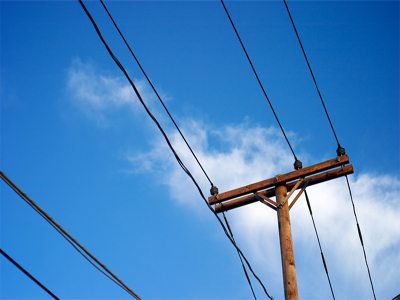Locally generated energy could be on the cusp of going mainstream in Australia’s National Electricity Market. On Thursday the Australian Energy Market Commission released a consultation paper on what is possibly the most radical proposal for energy market reform it has received.
If successful, the rule change request from the Total Environment Centre, the City of Sydney and the Property Council of Australia will recognise the benefits to networks and consumers of energy generated and consumed in the same area, avoiding the infrastructure costs and line losses from long transmission lines and big zone substations. It is part of the shift to a decentralised energy system that will eventually result in a smaller, more nimble grid that will cost consumers less.

For TEC this is about more than lower costs, though. It is about the link between local generation and renewable energy. We recognise the ongoing need for large scale wind and solar farms, but also want to incentivise local solar, bioenergy, hydro and storage.
To date these have only made sense financially for onsite or behind the meter consumption because the network charges – up to half of retail bills – incurred as soon as you cross a property boundary or go through a meter have made the transfer and sale of local energy largely uneconomic.
Essentially the rule change recognises that where energy is generated and consumed in the same area, the limited use of the grid should be reflected in lower costs.
There are potentially two ways to recognise these lower costs. One is to charge consumers less for the network component of the energy they source locally. But this would require every generator and consumer to be contractually related (otherwise we don’t know how much of their energy has been purchased locally). So in the rule change request we went for the other alternative, which was first developed in the UK, of having networks pay a credit to generators based on where and when they feed in to the grid.
There are a number of ways that the value of local generation can then be passed on to consumers. Basically it comes down to either financial arrangements like consumers owning shares in the generator (as members of community energy projects often do) or by a netting off of the energy between the generator and the consumer through the retailer’s billing system.
These kinds of arrangements are commonly known as virtual net metering or peer to peer trading, although we prefer the term local electricity trading (LET). There is a separate research process underway, led by the Institute for Sustainable Futures at UTS with ARENA funding, that is investigating how this might work and whether a second change to the electricity rules is needed.
But how to calculate the value of local generation? We have suggested a generation equivalent of the recent reform introducing cost reflective consumption tariffs. In other words, just as networks are now required to base their consumption tariffs on the likely future cost of augmenting the grid to cope with higher peak demand, we are proposing that generators be credited for the extent to which they can help to meet peak demand in the local grid, thereby helping to reduce future augmentation costs.
Network businesses are increasingly recognising the inevitability of more decentralised energy and the benefits that engaging in the reform process could bring by maintaining or even increasing utilisation of the existing grid. Four network businesses are participating in the ISF project.
If successful, this reform should improve the financial viability of a range of decentralised energy projects involving local councils, shopping centres, office buildings, apartments, precinct scale co/trigeneration, community energy and aggregated small scale solar and storage.
But it still faces significant hurdles. While the principle is clear, how the methodology for cost reflectivity should be applied (localised or smeared? demand or volumetric?) and how transaction costs should be accounted for are proving to be very complex.
Also, consumer groups don’t have a good track record in getting rule change requests through the AEMC unscathed. Its approach is, in a nutshell, to require that the proponents provide compelling evidence that the current rules aren’t working and that the alternative proposed is in the long term interest of consumers.
It is rather narrowly defined in the National Electricity Objective as relating to price, quality, safety, reliability and security of supply. No reference here to social or environmental outcomes, although recent meetings of the COAG Energy Council – the body to which the AEMC is ultimately responsible, and which gives it strategic direction – have recognised the interrelatedness of climate and energy policies.
Evidence of what’s not working isn’t hard to find. I can think of two large trigeneration projects in Sydney alone which are either not operating or are running at well below capacity because as soon as they cross the property boundary and are hit with full network charges the energy they supply is more expensive than mostly coal fired power coming from hundreds of kilometres away.
Thanks to the climate talks in Paris we are painfully aware that this is not a level playing field: Australia’s coal industry gets billions in subsidies every year, yet isn’t responsible for its health or climate impacts.
Mark Byrne is energy market advocate at TEC and can be contacted on 0403070442 or [email protected].For more information about the rule change, go to http://www.aemc.gov.au/News-Center/What-s-New/Announcements/Consultation-starts-on-the-Local-Generation-Networ . The closing date for submissions is 4 February.










